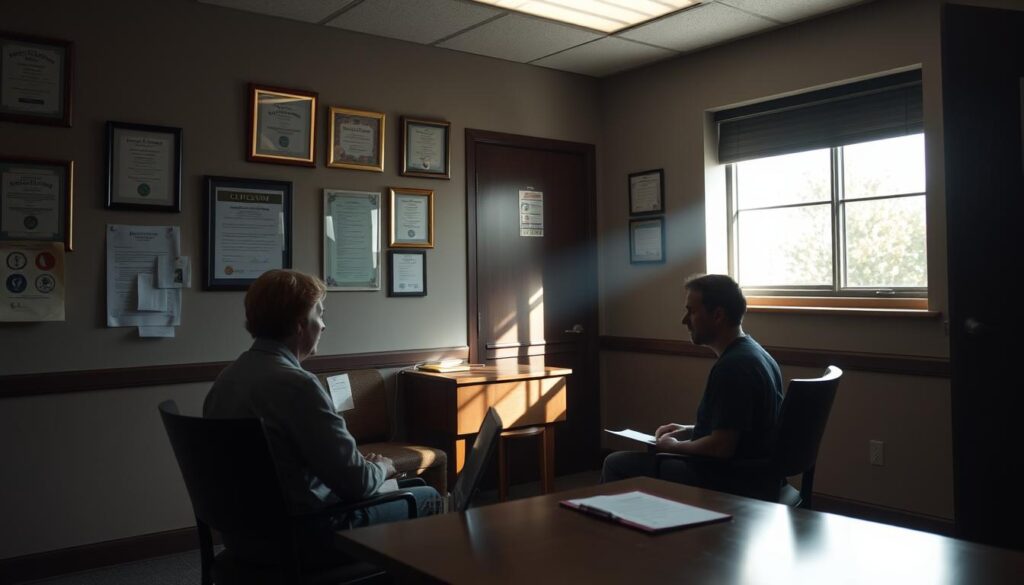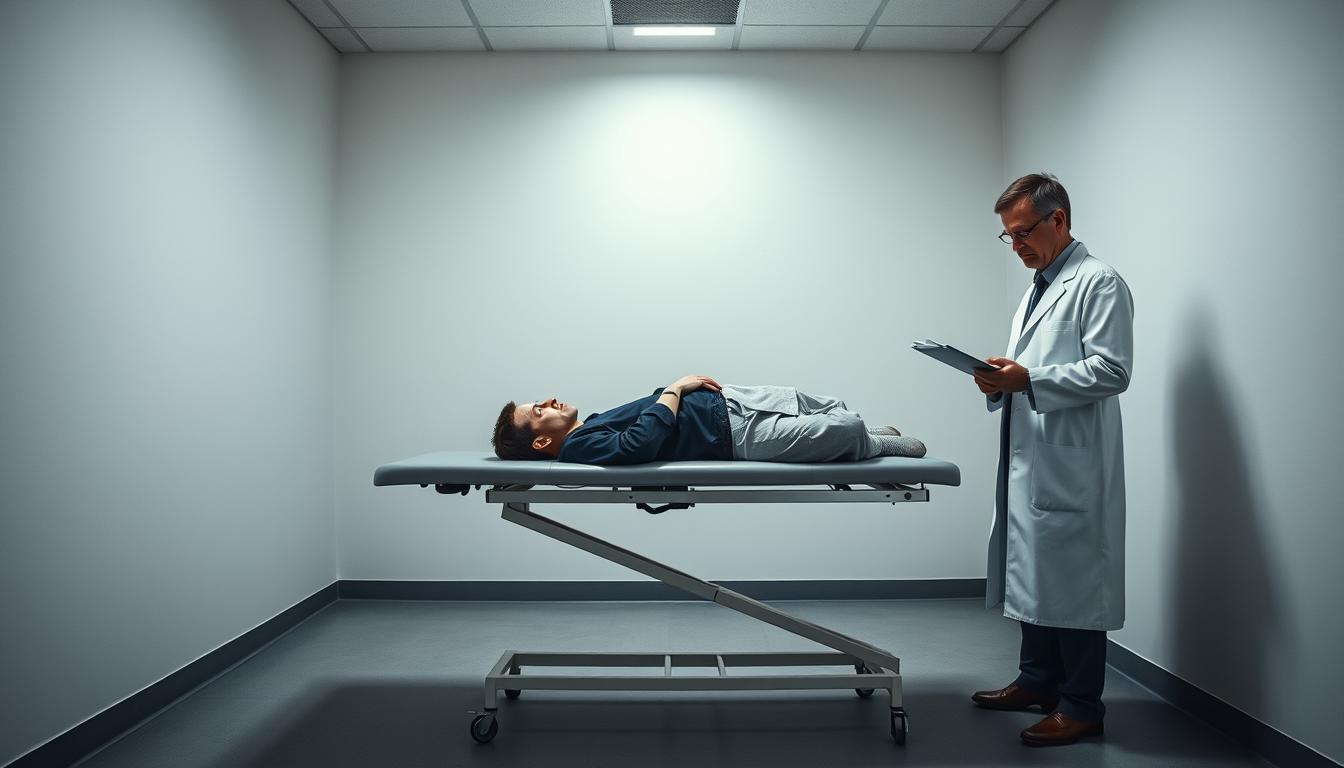When a loved one is experiencing a severe mental health crisis, it can be overwhelming and challenging to know the best course of action. In Pennsylvania, a 302 commitment is an involuntary psychiatric treatment option designed to provide urgent care for individuals in crisis.
The process of involuntary treatment is complex and often controversial, with varying perspectives from practitioners, advocates, and those who have received treatment. Understanding the signs, symptoms, and support options related to 302 commitments is crucial for both patients and their families.
By exploring the intricacies of this process, individuals can make informed decisions during a mental health emergency. This article will guide readers through recognizing warning signs, navigating the treatment process, and supporting recovery.
Key Takeaways
- Understanding the concept and process of 302 commitments
- Recognizing the signs and symptoms that may lead to involuntary treatment
- The importance of respecting individual rights during treatment
- Navigating the complex process of 302 commitments
- Support options available for patients and their families
Understanding 302 Mental Health Commitments
In situations where an individual’s mental health poses a clear and present danger to themselves or others, a 302 commitment serves as a vital emergency measure. This process is part of a broader mental health system designed to protect individuals who are unable to recognize their need for treatment.
What Is a 302 Commitment?
A 302 commitment is an involuntary psychiatric commitment that places an individual in an inpatient psychiatric facility when they are unable to voluntarily seek help. This type of commitment is processed only in the county where the concerning behaviors occurred and is designed as an emergency intervention for acute mental health crises.
To be considered for a 302 commitment, an individual must meet specific criteria within the past 30 days, such as posing an imminent risk of danger to themselves or others, being unable to care for themselves, or having attempted suicide.
Legal Framework and Purpose
The Mental Health Procedures Act outlines the legal framework governing involuntary treatment in Pennsylvania, including 302 commitments. The primary purpose of a 302 commitment is to provide immediate psychiatric care when a person poses a danger to themselves or others due to mental illness.
These commitments are temporary measures, lasting up to 120 hours, and are designed to stabilize individuals in crisis rather than serve as long-term solutions. It is crucial that 302 commitments balance protecting individual rights with ensuring safety and appropriate treatment.
Criteria for 302 Mental Health Evaluations
The criteria for 302 mental health evaluations are designed to identify individuals who are at risk of harming themselves or others due to mental health issues. To be considered for a 302 commitment, an individual must meet specific criteria within the past 30 days.
Clear and Present Danger to Self
A person is considered a “clear and present danger to self” if they have exhibited suicidal behaviors, such as attempted suicide, made suicidal threats, or engaged in self-mutilation with the intent to end their life. These behaviors demonstrate a significant risk to the individual’s own safety and well-being.
Risk of Harm to Others
If an individual poses a risk of harm to others, they may be considered for a 302 evaluation. This includes threatening or violent behaviors towards others, which are assessed to determine the level of danger they pose.
Inability to Care for Oneself
An individual who is unable to care for themselves without supervision may also be considered for a 302 evaluation. Examples include failing to take life-sustaining medications or not eating/drinking, which can lead to serious health consequences.
The criteria for a 302 evaluation are assessed through observation and reports from witnesses. Mental health professionals evaluate the severity and immediacy of the danger posed by the individual to determine whether a 302 commitment is appropriate.
| Criteria | Description | Examples |
|---|---|---|
| Clear and Present Danger to Self | Suicidal behaviors or self-harm | Attempted suicide, suicidal threats |
| Risk of Harm to Others | Threatening or violent behavior | Physical threats, violent outbursts |
| Inability to Care for Oneself | Failure to meet basic needs | Not taking medication, not eating/drinking |
Meeting these criteria does not automatically result in a 302 commitment but triggers a thorough evaluation by mental health professionals. The goal is to provide support and intervention for individuals struggling with mental health issues.
The 302 Process: From Petition to Evaluation

The 302 process involves several steps, from the initial petition to the final evaluation. It is a complex procedure designed to balance individual rights with safety concerns.
Who Can Request a 302 Petition
A 302 commitment requires a petitioner, who can be categorized into two types: Part A and Part B. Part A petitioners are community members who have witnessed concerning behaviors firsthand. Their petitions must be approved by a designated county official. On the other hand, Part B petitioners include physicians, police officers, and county administrators, who can directly authorize an evaluation.
Emergency Evaluation Procedures
Once a petition is filed, the individual is transported to a crisis center or hospital for an emergency evaluation. A mental health professional assesses the person to determine the need for inpatient psychiatric care. This evaluation is critical in determining whether the 302 commitment will be upheld or discontinued.
| Petitioner Type | Description | Approval Requirement |
|---|---|---|
| Part A | Community members who have witnessed concerning behaviors | Designated county official approval |
| Part B | Physicians, police officers, county administrators | Direct authorization |
Time Limitations and Next Steps
The emergency evaluation can last up to 120 hours (5 days). After the evaluation, the person may be discharged or transitioned to extended involuntary treatment. For more detailed information on the 302 process, you can visit Main Line Health’s blog on understanding the 302.
The 302 process is designed to be thorough yet expedient, ensuring that individuals receive the necessary care while respecting their rights. Understanding this process can help individuals navigate the complex mental health system.
Types of Treatment Following a 302 Evaluation

The outcome of a 302 evaluation can lead to different treatment pathways, each designed to address the individual’s mental health condition. The type of treatment recommended depends on the severity of the mental health issue, the individual’s specific needs, and the level of care required to ensure their safety and the safety of others.
Inpatient Psychiatric Treatment Options
Acute inpatient psychiatric units provide intensive treatment for individuals struggling with severe mental health conditions such as depression, mania, psychosis, self-harm, and suicidal behavior. These units are locked facilities that offer a safe environment for patients to receive the care they need. If a person is admitted involuntarily, the treatment team assesses their condition and decides whether to discharge them within 5 days or request a longer commitment through a “303” hearing.
Extended Involuntary Treatment (303, 304, 305)
If further treatment is necessary after the initial 302 evaluation, the individual may be subject to extended involuntary treatment. This can involve a 303 hearing, which allows for up to 20 days of additional hospital treatment. If needed, a 304b hearing can extend treatment for up to 90 more days, and a 305 hearing can further extend it for up to 180 days. These extensions require mental health court hearings where evidence must be presented to justify continued treatment.
Assisted Outpatient Treatment
For some individuals, assisted outpatient treatment may be a viable alternative. This less restrictive option allows individuals to receive mandated treatment while living in the community. A team of mental health professionals, including psychiatrists, nurses, therapists, and social workers, work together to develop and implement a personalized treatment plan. The goal is to provide support and treatment while promoting independence and community integration.
The ultimate goal of all treatment options is to achieve stabilization and facilitate a transition to voluntary care. By providing a range of treatment pathways, individuals can receive the care they need to manage their mental health conditions effectively.
Supporting Someone Through the 302 Process
Supporting a family member or loved one through the 302 process requires a comprehensive understanding of the steps involved and how to effectively communicate with healthcare professionals. This process can be complex and challenging for both the individual and their family.
Family Involvement and Communication
Family involvement is crucial during the 302 process. However, due to privacy laws like HIPAA, families may face challenges in obtaining information about their loved one’s hospitalization. Families can contact the psychiatric hospital’s nursing station to request to speak with the treatment team. It is helpful for families to provide information about the person’s medication history, allergies, and previous treatments to the healthcare professionals.
To facilitate communication, a family member can request that their contact information be provided to the treatment team in case the person is admitted to the hospital. This ensures that the family is informed and can provide necessary support.
Discharge Planning and Continued Care
When planning for discharge, family meetings with the treatment team are essential. These meetings help in understanding the person’s treatment plan, including medication regimens and follow-up appointments. Families should also be prepared to provide continued support after discharge to prevent future crises.
Helping the individual transition back to community living while maintaining their treatment plan is vital. This includes ensuring that they adhere to their medication regimen and attend follow-up appointments. By being involved in the discharge planning process, families can play a significant role in their loved one’s recovery.
Conclusion
The 302 mental health commitment serves as a vital emergency intervention for individuals experiencing acute mental health crises. It is a legal process that ensures safety and provides necessary treatment when individuals cannot recognize their need for it.
Following a 302 evaluation, various treatment options are available, including inpatient psychiatric care and outpatient programs. Understanding the 302 process is crucial for both individuals in crisis and their support networks.
By knowing the available resources and services within the community, individuals can navigate the mental health system more effectively. It’s essential to seek information from county mental health offices and crisis centers before emergencies occur.
With proper support and treatment, individuals can recover and thrive after experiencing a mental health crisis.
FAQ
What is a 302 commitment, and when is it used?
A 302 commitment is an emergency evaluation process used when an individual poses a clear present danger to themselves or others due to a mental illness. It allows for a temporary involuntary commitment for evaluation and treatment.
Who can request a 302 petition?
A 302 petition can be requested by law enforcement, county mental health professionals, or family members if they believe an individual is at risk of harming themselves or others.
What happens during a 302 evaluation?
During a 302 evaluation, a mental health professional assesses the individual’s condition to determine if they meet the criteria for involuntary commitment. This evaluation typically occurs in an inpatient psychiatric unit or a hospital.
How long does a 302 commitment last?
A 302 commitment is typically limited to 120 hours. After this period, the individual may be released, or further treatment may be pursued through other legal mechanisms, such as extended involuntary treatment.
What are the next steps after a 302 evaluation?
Following a 302 evaluation, the individual may be discharged, or they may be transitioned to other forms of treatment, including assisted outpatient treatment or longer-term inpatient care.
Can family members be involved in the 302 process?
Yes, family members can play a crucial role in the 302 process by providing information to county mental health services and supporting their loved one during and after the evaluation.
What support is available after discharge from a 302 commitment?
After discharge, individuals can access various community resources and support services, including behavioral health services, to help them manage their condition and prevent future crises.

